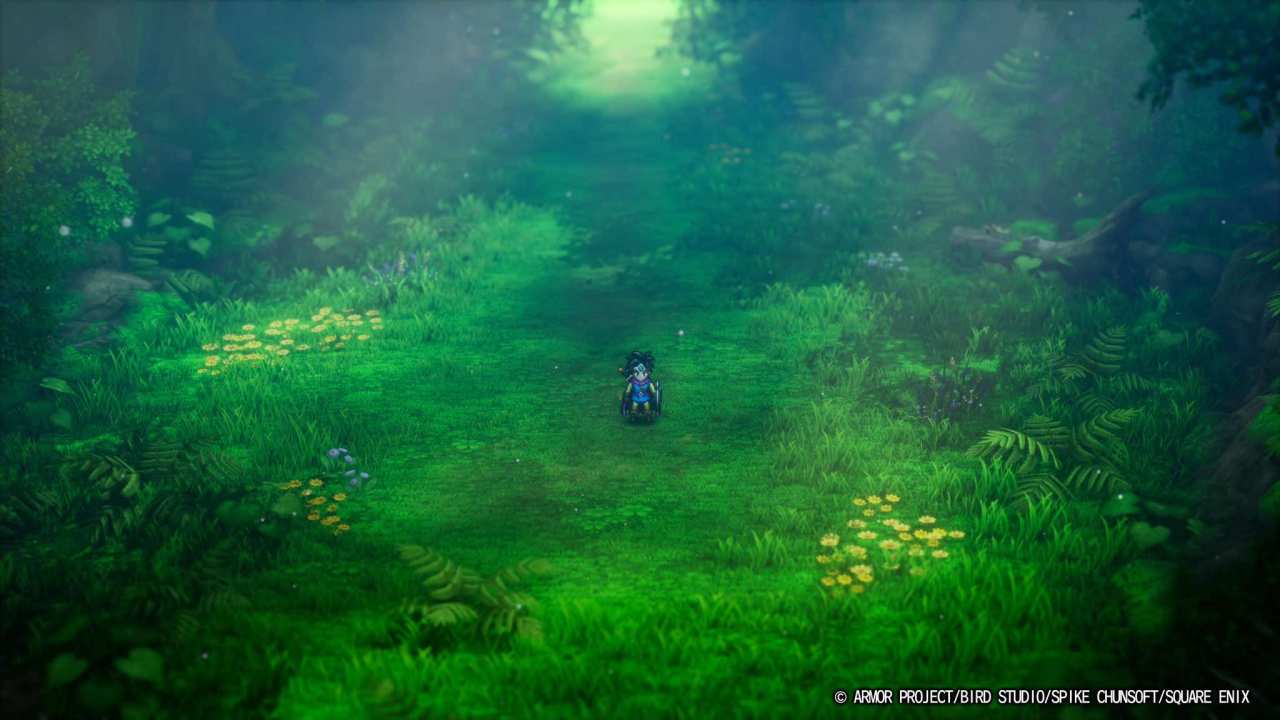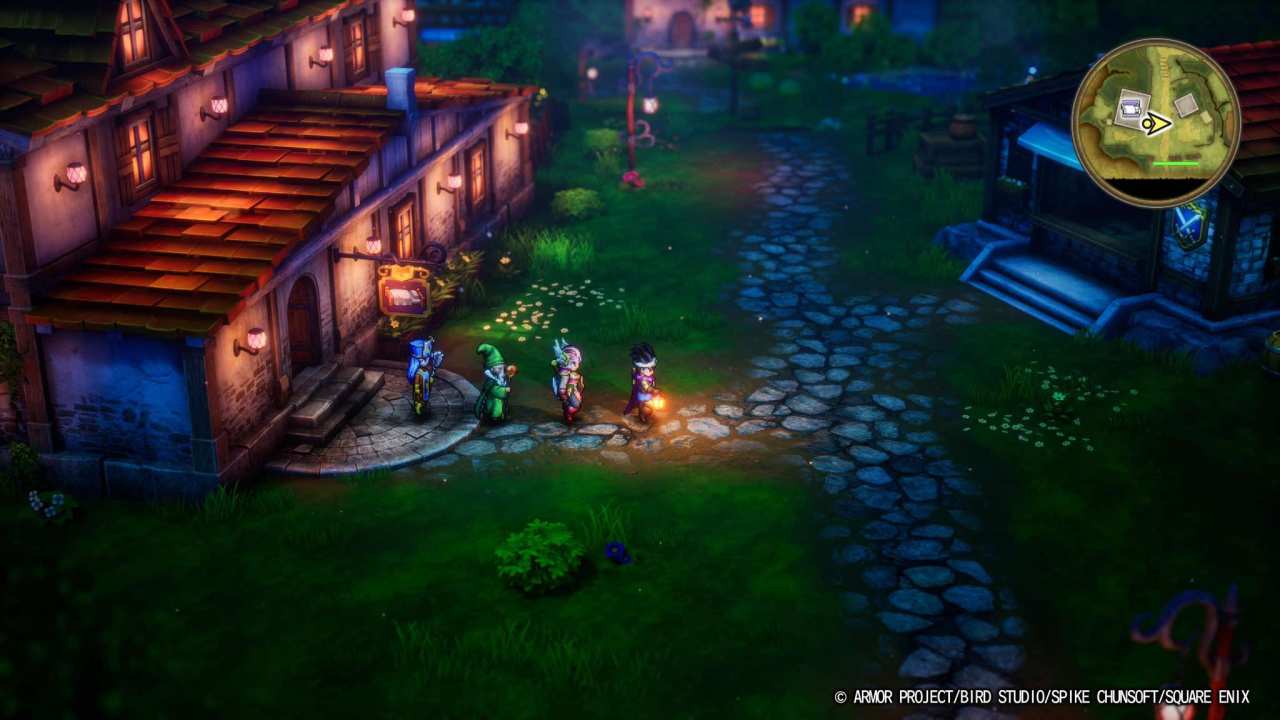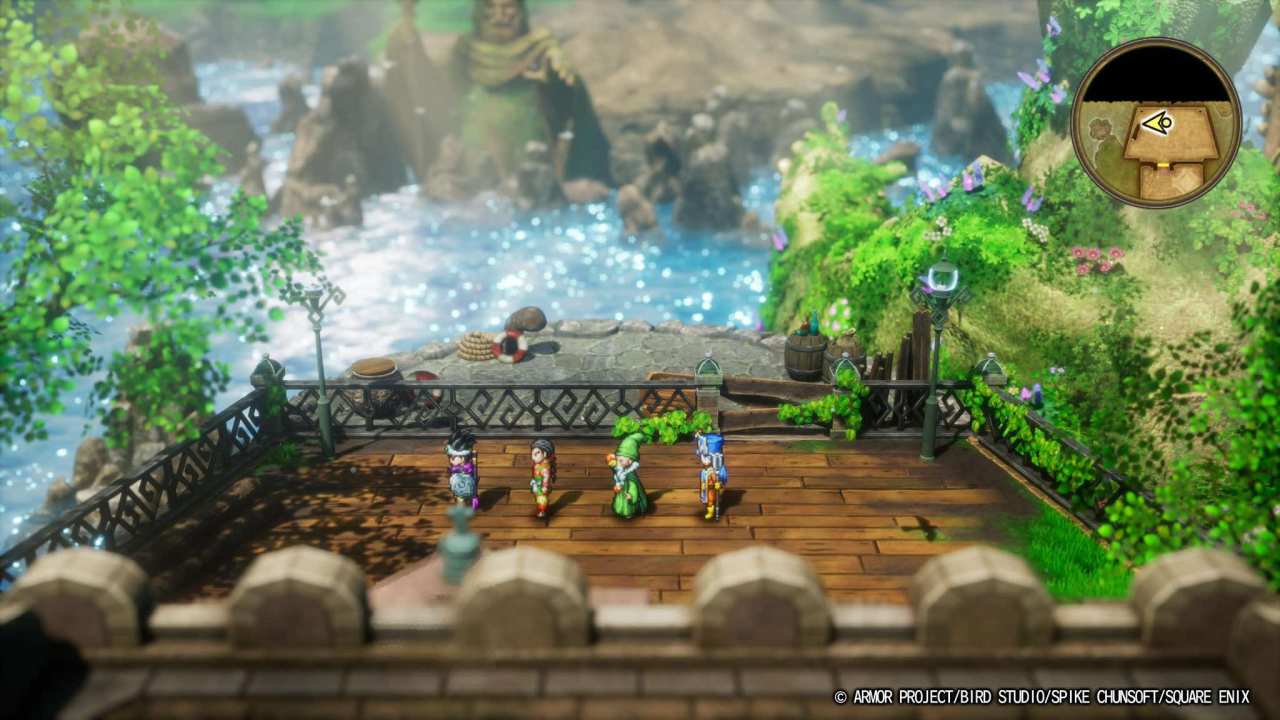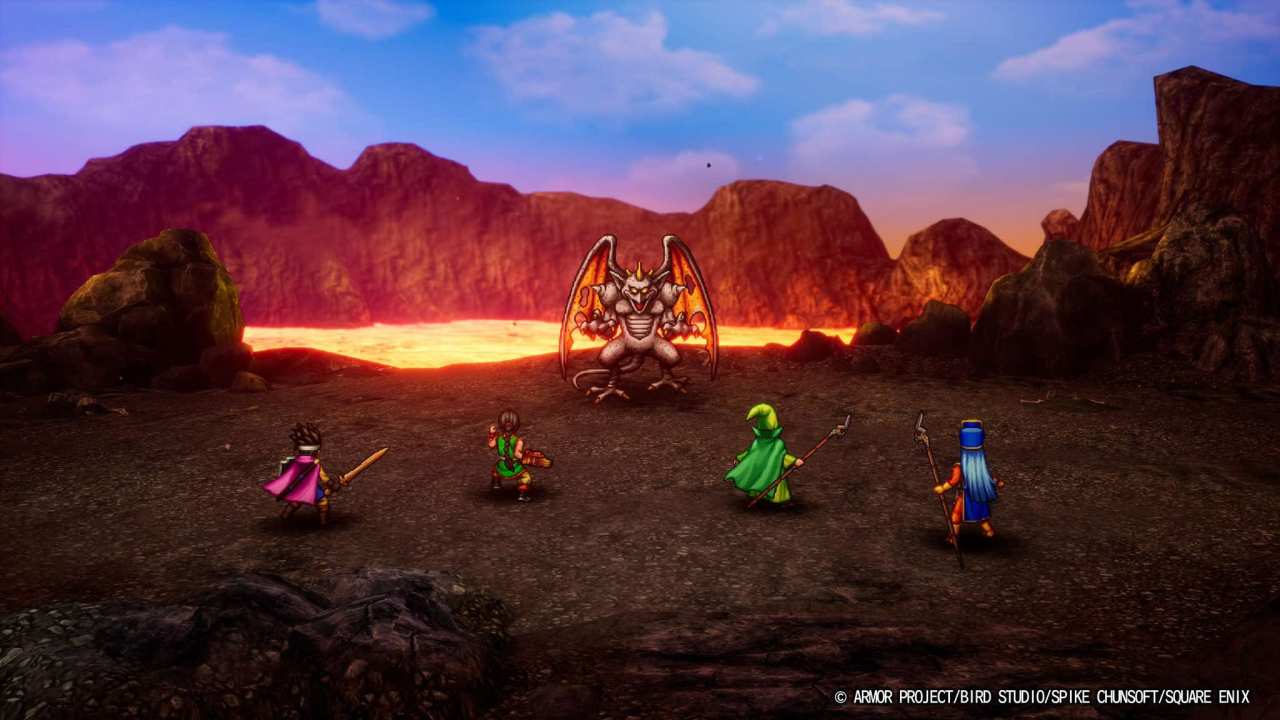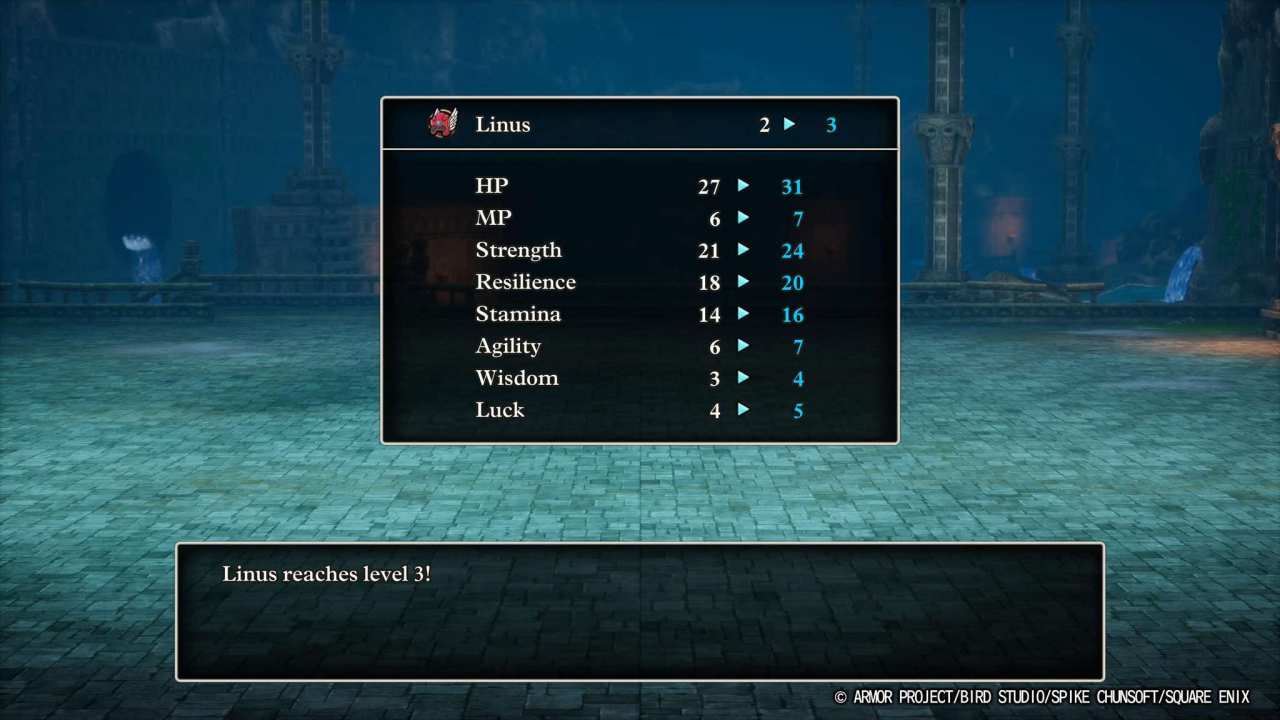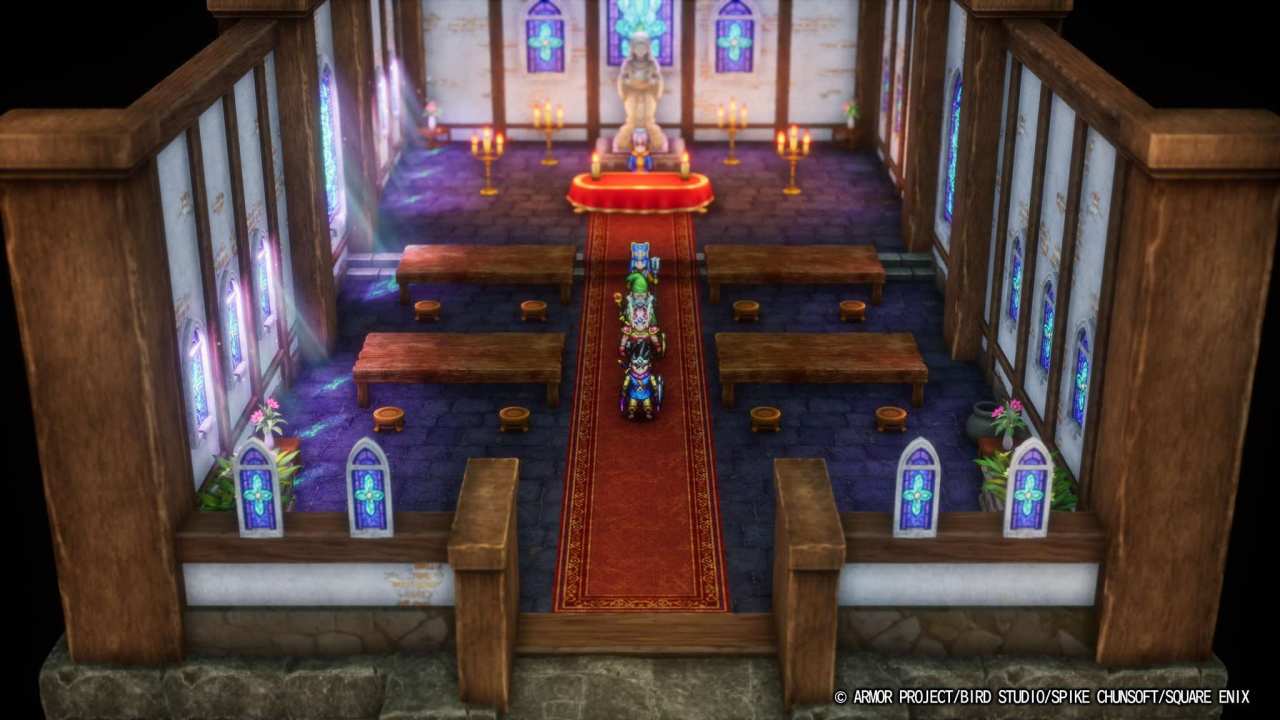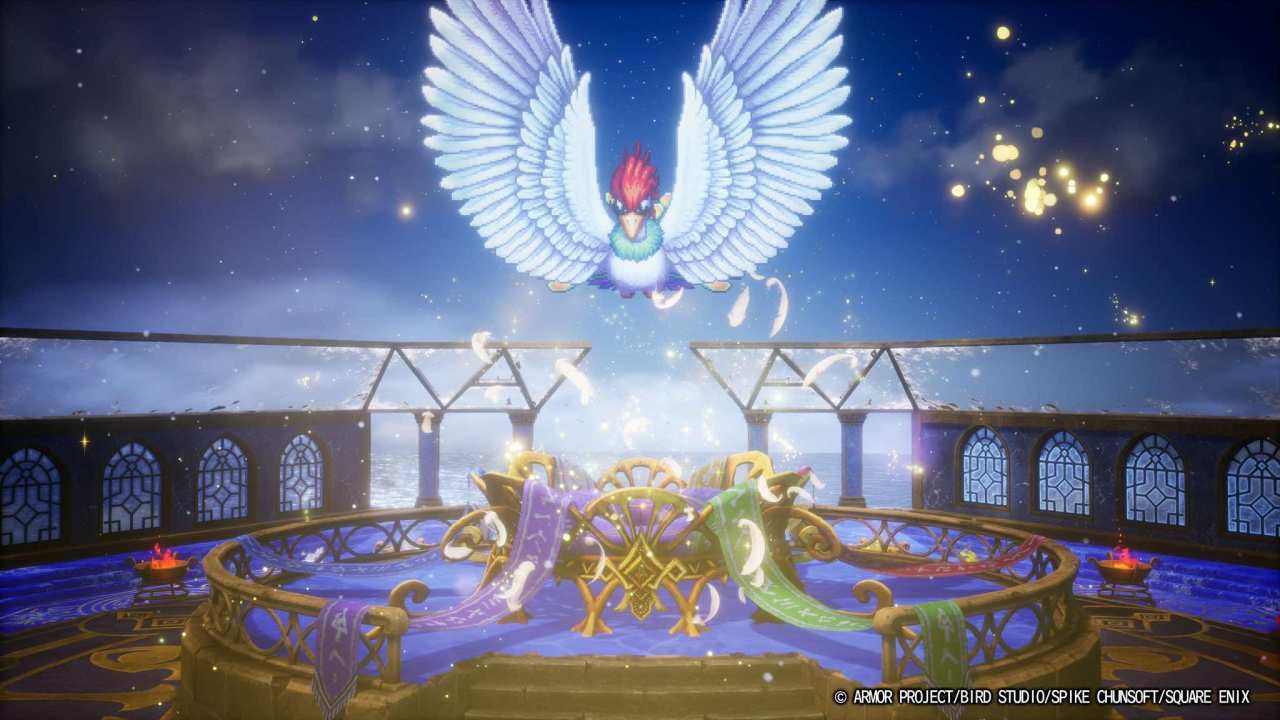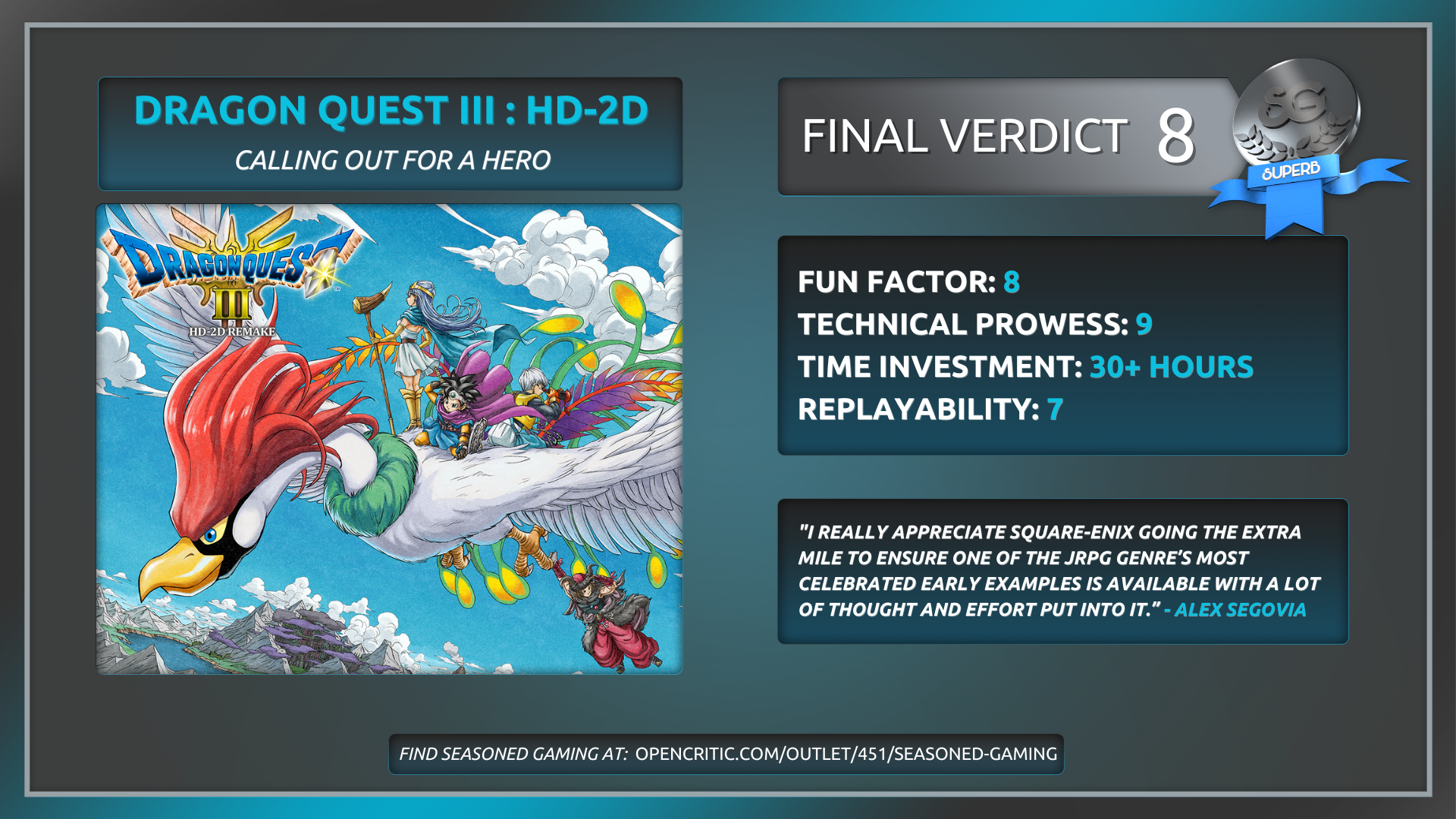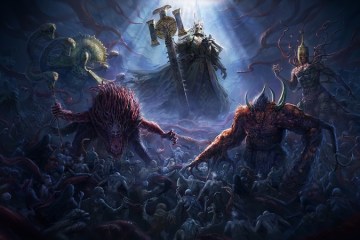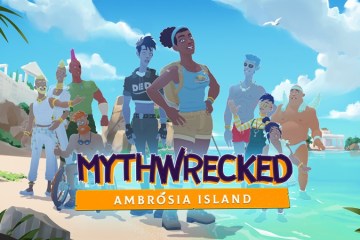The JRPG genre has certainly had one of its most robust years ever in 2024. Just listing all the big name quality titles that dropped this year alone is so daunting. Like a Dragon: Infinite Wealth, Persona 3: Reload, Final Fantasy VII Rebirth, Unicorn Overlord, Romancing Saga 2: Revenge of the Seven, Metaphor: ReFantazio, and so on and so forth. Personal preferences and differences in quality notwithstanding, you certainly can’t say that it has not been a phenomenal feast for one of the most celebrated hardcore genres in gaming this year.
Just before you can close the book on JRPG releases in 2024, here comes Square-Enix at the tail end with the release of Dragon Quest 3: HD-2D Remake. A remake for the third entry in a franchise that’s considered to be one of the grandfathers of JRPGs, does Dragon Quest 3: HD-2D Remake provide a solid way for newer players to experience one of the most formative earlier entries of the genre and stand tall with some of the genre’s best released this year?
To Be A Hero
Originally released by Enix and Chunsoft as Dragon Warrior III in 1991, Dragon Quest III HD-2D Remake tells the narrative beginning of what’s known as the series “Erdrick Trilogy.” On the eve of his 16th birthday, your unnamed hero goes on his journey to follow in the footsteps of his father, Ortega, who went missing when he went on his own quest to vanquish an Archfiend who’s threatening to wipe out the entire world. From there, Dragon Quest III HD-2D Remake becomes a classic small hero tale where the hero and his/her choice of nondescript party members go there and back again throughout the continent on their grand adventure, visiting the different towns and cities looking for clues on Ortega’s whereabouts, saving the towns from their current predicaments in the hope they’ll be pointed the right way to save the world.
With this being one of the grandfathers of traditional JRPG design, Dragon Quest III HD-2D Remake both benefits and suffers a bit from its old school origins. Narratively speaking, the game doesn’t waste too much time with a preamble. You name your nondescript hero and answer a couple of questions to determine his/her personality (that will specifically affect how your stats grow over time). You are then given your goal, you go pick your party, and you are set on your adventure. It wears the classic “small hero tale set on a grand adventure” on its sleeve at all times, and it helps the game skip the slow start that tends to bog down many JRPG’s that take a little too much time to get going. And the simplicity of the approach allows the “hero arrives to town, helps townsfolk, and gets hints for his next destination” to shine the brightest when you visit the towns that are clearly modeled on real life places, like Portugal and Japan. The game exudes charm and personality, and it carries the adventure most of the time.
At the same time, its simplicity also stands in stark contrast with how many JRPG’s nowadays have taken many strides forward in deepening both individual characters or telling more ambitious stories (with some games leaning one way or another, with few mastering both well). The thrust of the story in Dragon Quest III HD-2D remained the same in the 30-35 hours I played it to completion. Its simplicity was refreshing early on, for sure, but outside some “twists” that seemed a bit obvious that came near the end, I can’t say I remained wholly enthralled with the simplicity as I reached the ending of the story. The fact that your hero (along with his/her party) is more an avatar of your adventures definitely didn’t help the downtime as I kept going from town to town. I understand it’s a result of this being an older game that set the stage for the genre to build and improve upon it. From that perspective I appreciate it as a great “museum piece” for the origins of this genre, even if, as a remake standing next to so many competitors, its simplicity just stands out more from a modern lens. At least I’m interested in how the upcoming Dragon Quest I & II HD-2D Remake builds upon this one narratively, with this game basically “setting the stage” as a canonical prequel to the “Erdrick Trilogy.”
Quality of Life Chimera
As a remake for such an old game, Dragon Quest III HD-2D Remake attempts to have it both ways in trying to preserve the hardcore JRPG experience that defined the series in gaming’s early years while adding quality of life that modernizes certain specific elements that will certainly placate audiences with more modern sensibilities. One of the bigger elements of these games back then was how they would let you figure things out on your own, relying on your travels and your conversations with different townsfolk, hoping they’d give you directions or a semblance of directions to guide you next on your quest. For gamers that still like to figure things out on their own, you can play the game that way, even deciding on your own if you want to “record” your conversations on a limited journal via the “Recall” mechanic, if you so desire. For gamers that want less friction in their exploration, Dragon Quest III HD-2D has definitely got you covered by giving you an option where a yellow circle will always point you in the right direction regardless of where you are in the world and the story, as long as you simply follow along. Even when the game becomes wide open around the halfway mark with multiple “vague” objectives that require more exploration, the objective markers, at the very least, will always rightly guide you to your destination despite the vagueness of what you need to do.
Other quality of life improvements can be found in the combat system. Dragon Quest III HD-2D Remake is a pure turn-based RPG through and through, when your hero and your party members will engage with random enemy encounters out in world exploration or the dungeons. The combat system can be malleable to make specific things more automatic by default. The party defaults to a “Show No Mercy” tactic where you don’t have to input any command to the individual members of the party, and they’ll do what they deem best for their enemies. However, you can also change the behaviors of the party, where you can tell all of them, together or individually, to prioritize other things like “Fight Wisely,” “Focus on Healing,” “Don’t Use MP,” or “Watch my Back,” If that is too automatic for your taste, you can also set the “Follow Orders” so it becomes a more traditional turn-based RPG where you individually input what you want each character to do. During the entire playthrough, eventually I found a sweet spot of keeping my Hero, Martial Arts and Magician specialists on the “Show No Mercy” tactic, while having my Priest in the “Watch my Back” tactic for the random rank and file, and then switching towards “Follow Orders” for more specific harder bosses.
While I found the turn-based combat fairly satisfying to execute (and the way the class systems develop from level 20 onwards with some individual Spells and Abilities, which can be really powerful), there are still some quirks to grasp within the combat that were irritating until I figured it out. For one, figuring out how to properly set who attacks first in your party despite their formation all hinged on how high their Agility stat is, where whoever has it highest would go first in attacking the enemies on command. Before figuring this stat out, I went through many combat scenarios of a party member I didn’t want attacking first going first, which sometimes wouldn’t go with the flow I had planned when I was more meticulous with the commands on “Follow Orders.” And not knowing this when some enemies would then sometimes attack you twice in a row would create an aggravating flow to some of these combat encounters that made me dread every time one of these random encounters would happen.
And this aggravation is exacerbated by the quality of life the game does not have. One of the roughest elements of playing Dragon Quest III HD-2D Remake compared to the fellow old-school Final Fantasy Pixel Remasters is how that collection included specific quality of life options in regards to random enemy encounters and the XP/currency gains you could manipulate if you wanted to speed up the process. Random enemy encounters in Dragon Quest III HD-2D Remake can happen quite often and with reckless abandon. Sometimes it set you up with up to 6 enemies at once that could potentially one-shot you, and you are at the mercy of a “Flee” mechanic that’s completely RNG based and not 100% reliable if you are just not interested in fighting at a certain moment. While not as bothersome out and about, random encounters in dungeons happen so often and with such random difficulty spikes, it bothers me more in general that Dragon Quest III HD-2D Remake didn’t allow for the option to disable random encounters. There are many lovely environments worth exploring and dabbling with in this game, and engaging with those while dealing with the frequency of random encounters tends to spoil the fun sometimes. And I feel it more having experienced many re-releases of this gaming era that have accounted for this specific aspect.
This is also tied with the fact that Dragon Quest III HD-2D Remake, by itself, can be a very grindy game. As I mentioned previously in my preview, the game had a fairly nice progression curve before hitting me with a brick wall in a major Pyramid dungeon where rank and file enemies could obliterate you so swiftly. Obviously, this was a sign to go out and just grind up levels, but during this time, the XP requirements and the amount of XP you were getting as you were leveling up felt a bit too dire a climb at times. Your next level being 2000+ xp away with you getting sometimes between 20 to 40 xp gains per fight definitely did not feel good. Further in the game, the XP gains do increase even though the requirements to level up do, too, and it’s a tension that I felt remains there as you keep getting to places that reset you back on your grind to survive. Once again, having played other games that allowed you to increase XP gains if you wanted to speed up the process, it just added a level of friction that stood in contrast to how other quality of life elements broke that friction.
What Square-Enix did to alleviate these pain points from a quality of life standpoint was simply giving you different difficulty options. I played the majority of my time on the standard middle “Dragon Quest” Normal difficulty. After being stonewalled for a bit, I lowered the difficulty to the “Dracky Quest” difficulty to test how easier it could get. But what it instead becomes is a Story mode with God mode enabled, where on this difficulty, you literally CAN’T DIE ever. This is definitely the difficulty mode for players that don’t want to bother with the game’s obtuse Resurrection mechanic.
The mechanic requires you to zoom into the nearest town’s church/priest to resurrect your teammates since resurrection magic takes too long to unlock (it took me until my Priest got to Level 23 to get a resurrection ability that guaranteed resurrection instead of a chance at resurrection) and resurrection items are so scantily found in the world (I found only 8 of these items total in the entire playthrough). So for players that don’t want to deal with both the slow grindy nature of leveling up while also dealing with the hard difficulty spikes, at least this difficulty option is there in lieu of other quality of life options found elsewhere. Considering “Dracky Quest” removes all semblance of difficulty, more granular tuning options, like other similar games, would have served the game better instead of a God mode.
One final quality of life gripe for a game I still ended up liking despite all this criticism has to do with the equipment menu system. I found the process of acquiring and equipping items a little too backwards and cumbersome for how often you can get items in this game. While I appreciate that there is nothing resembling gear encumbrance, and you can have as many items as you want, I found the way the menu presents what gear can be equipped for your character obtuse and in stark contrast, once again, with how the game worked hard to remove friction elsewhere. Don’t be shocked if you spend countless hours cycling through the equipment menu, hoping to see if a specific helm, armor piece, or secondary trinket will fit your picked party member, which happens deep into the menu.
I harped a lot on the quality of life for Dragon Quest III HD-2D Remake because the ways they worked in elements to ease the friction all stand in stark contrast to the ways they didn’t. The frictionless nature of the improvements helps the game a good 75%, which makes the 25% that is full of friction more frustrating than intended. Perhaps as a way to keep some of the hardcore elements in play that were there with the original game, the lack of quality of life mixed with the tedium of the random encounters, the XP grind, resurrection system, and the equipment menus hurts the enjoyability that is clearly there in the other areas that saw massive improvements.
Yggrasil’s Leaf
As a fan of remakes, I appreciate how we have reached a point visually where we can get the full on, from the ground up remake with the modern bells and whistles to ones that keep the intended spirit of what a game was originally, making it modern without losing the spirit. Dragon Quest III HD-2D Remake absolutely fits in that latter category. Just take one look at Dragon Quest III HD-2D Remake, and what you get is one of the most pleasing, beautiful pixel art games available. While the game doesn’t go the route of Square-Enix’s Octopath Traveler games of rendering everything with a pixel-art sheen, Dragon Quest III HD-2D Remake expertly mixes the pixel art characters with the 3D environments in a way that feels congruent and without the “cheapness” that can sometime plague 2.5D rendering. The environmental diversity of the world and the different real-world inspired locations stand out massively, making the act of visiting the different towns the biggest highlight. The quirky personality that exudes from the character designs from the dearly departed Akira Toriyama shine throughout with the sprites of the characters in the open world as well as the monsters during the FPS view of the combat system. These are definitely some of the prettiest pixel-art animations found in a modern game, and I selfishly would want other pixel-art games from the era to get this treatment.
As for the game’s soundtrack, I both love it while also being a tad conflicted. The trumpet theme, which is trademark for the Dragon Quest franchise, is cheerful and lovely every time it kicks off the game, and it fits the game’s quirky sense of adventure well. Unfortunately, it’s pretty insane how often the game repeats its musical motifs ad nauseam throughout the entire game. The town, overworld, and battle themes are literally the same every single time, and with a few exceptions when you get certain different ways to travel, along with the final boss fight where the music does change, it’s crazy just how monotone the game’s musical identity actually is. For a genre that’s very famous for providing legendary musical motifs that carry the adventures with aplomb, the songs in Dragon Quest III HD-2D Remake definitely would fit that mold, but the repetition eventually snaps you out of it in a way that’s unfortunate despite the lovely music itself. And while I appreciate the attempt to add voice acting to the game, the voice acting is sporadic and very hit and miss, to the point that I wouldn’t have minded an entirely text-based adventure instead. But kudos for trying.
Sparkle Spotter
As someone who’s a big proponent for the preservation and availability of influential, important games in the industry’s history, I really appreciate Square-Enix going the extra mile to ensure one of the JRPG genre’s most celebrated early examples is available with a lot of thought and effort put into it. Despite some of the hang-ups that stem from its old school design, what Square-Enix did nail to clean up plenty of friction points makes Dragon Quest III HD-2D Remake a very solid effort for first timers to dive into the early era of one of the JRPG genre’s most celebrated and influential franchises.
With the upcoming Dragon Quest I & II HD-2D Remake waiting in the wings for 2025, here’s hoping Square-Enix continues improving the friction points to make the trips down memory lane as pleasant as possible.
You can find Seasoned Gaming’s review policy here

